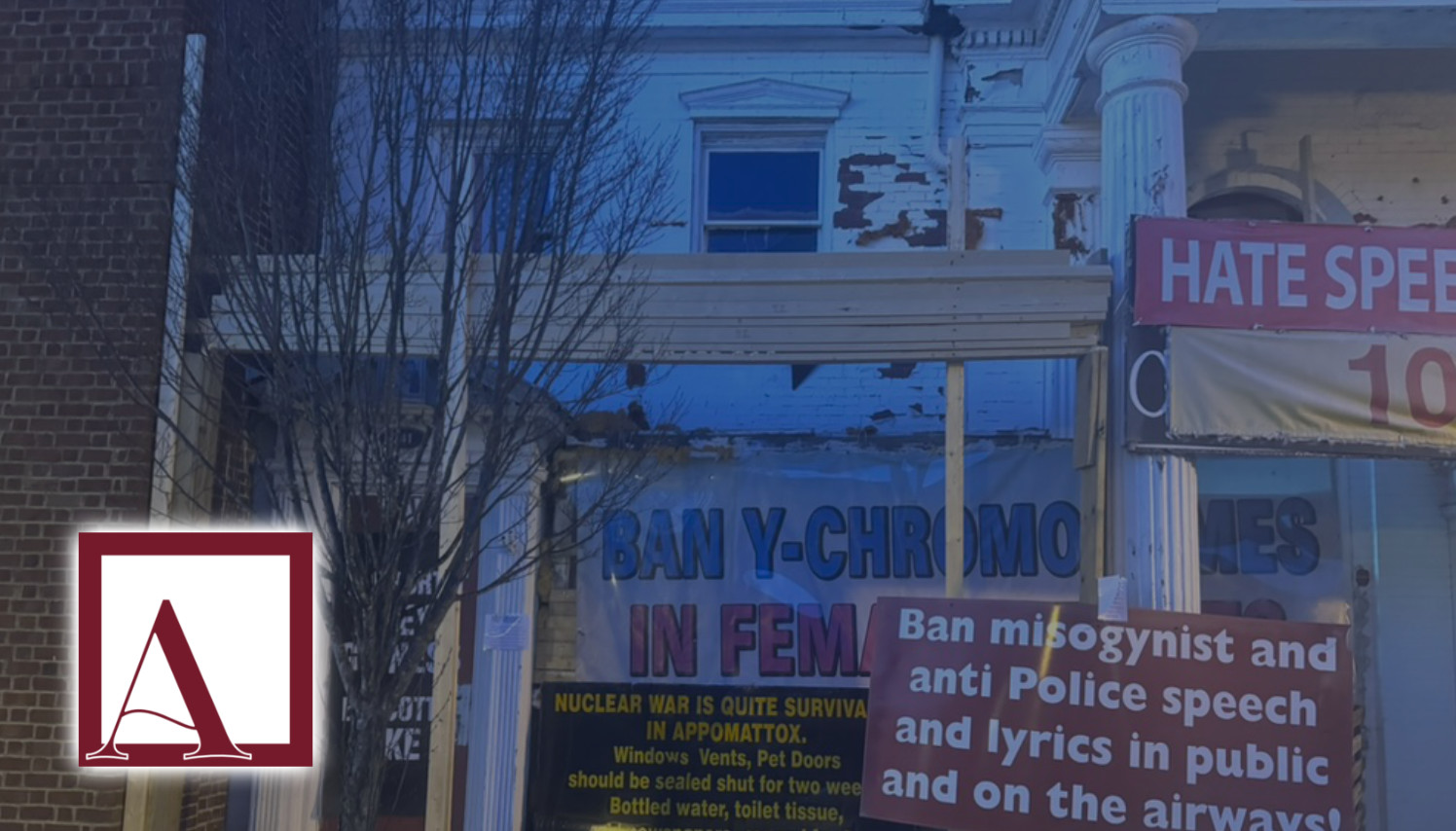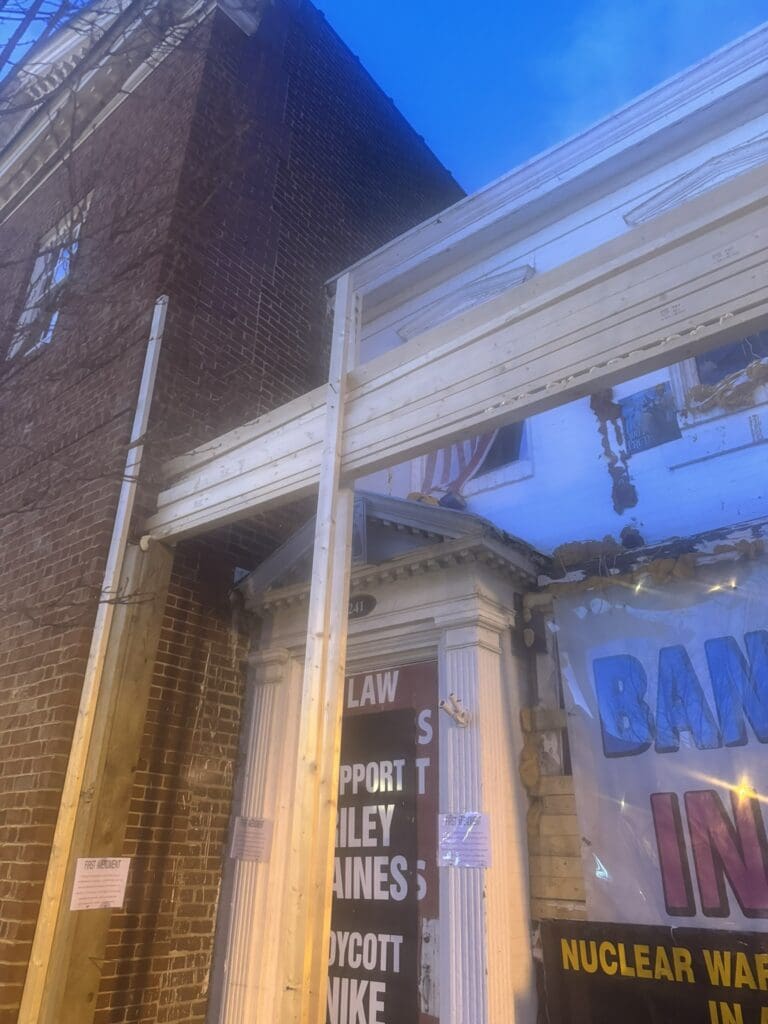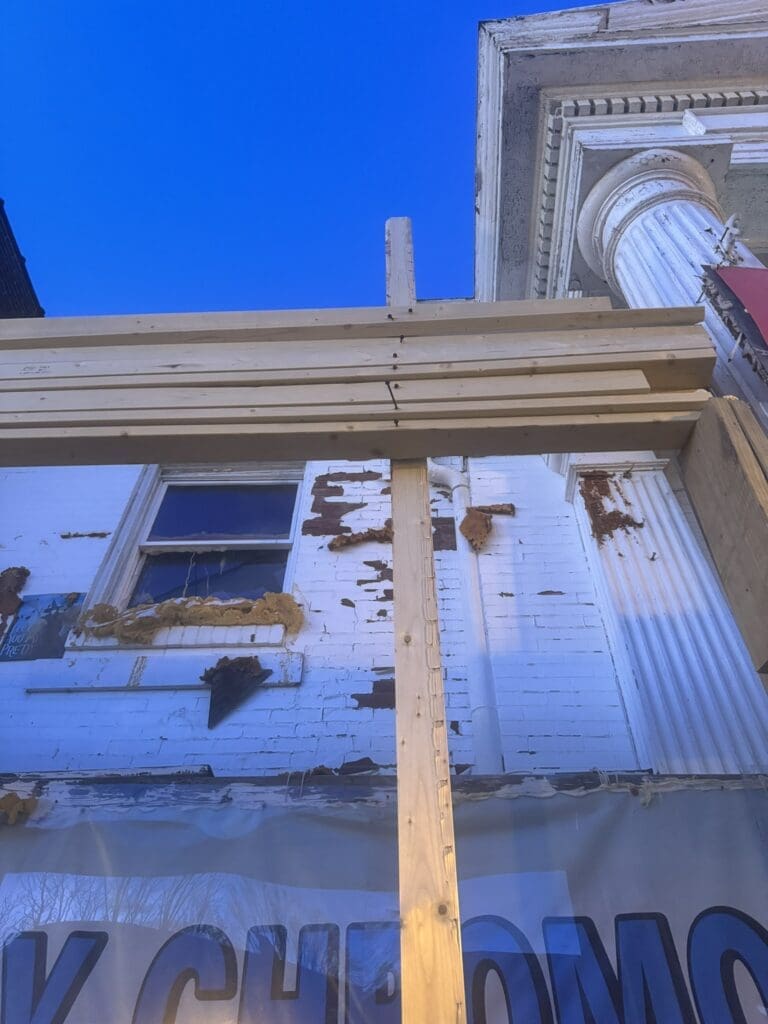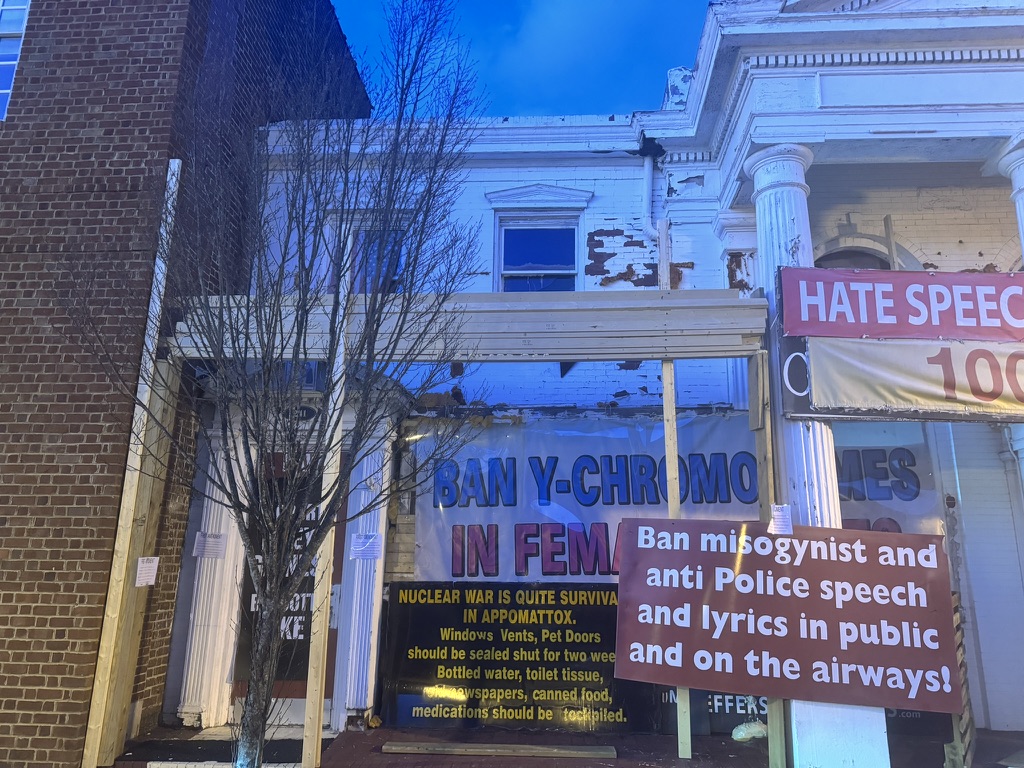New Sculpture on Main Street: “The Limits of the State” and the Art of Speaking (or Not Speaking) Freely

APPOMATTOX—There is a kind of tenuous grandeur to the scaffolding of democracy, and nowhere is this made more literal than in The Limits of the State (2025), a mixed-media installation currently displayed on a storefront in downtown Appomattox. Constructed from humble materials—#2 pine, Portland cement, and hex-drive tapcons—this piece speaks not only to the structural fragility of free expression but to the forces that seek to encase, reinforce, and, at times, erase it entirely.
At first glance, one might mistake The Limits of the State for an act of emergency renovation, the haphazard bracing of something coming apart at the seams. But step closer. Notice the thirteen wooden beams, a deliberate invocation of the thirteen original colonies, now repurposed not as a foundation of freedom but as a barricade. These slats of wood, hastily joined and industrially fastened, stand in as both sentinels and jailers—protecting what remains, enclosing what cannot escape.
It is in this setting that we see the quiet tragedy of a single laminated sheet of copy paper, bearing the First Amendment, almost invisible against the more assertive proclamations of authority. Just inches away, a imposing red banner commands:
“Ban misogynist and anti-police speech and lyrics in public and on the airwaves!”



The contrast is stark: the most foundational liberty in American life, printed in the size of a lunch menu, is rendered a whisper against the roaring decree of censorship. The piece forces us to ask: What is the role of free speech in an era of compelled silence? Where do the boundaries lie between protection and prohibition, between public safety and the policing of thought?
And then, the deeper question lingers—a reference to that enduring legal metaphor, the proverbial ‘crowded theater.’ Has the artist presented us with a crisis of irresponsible speech or a society too willing to bar the exits before a word has even been uttered?
The genius of The Limits of the State lies in its incompleteness, its refusal to provide an answer. It is at once a work of warning and inevitability, a portrait of a nation eternally caught between its loftiest ideals and its basest instincts. It does not demand a verdict, only attention.
If we listen closely, perhaps we can still hear the echoes of what was once allowed to be said.
Comments
Leave a Comment